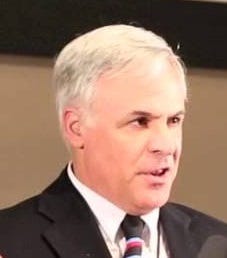Baby teeth can show that nuclear power is a health hazard

The “Tooth Fairy Project” asks local parents to donate their child’s milk teeth to answer the question: “Is the Fermi 2 nuclear power plant a threat to local health?”
The otherwise cute name “Tooth Fairy Project” is actually a serious scientific study. The Radiation and Public Health Project (RPHP), which is conducting the study, is accepting donated teeth and plans to send them to a specialized laboratory for strontium-90 (Sr-90) measurements.
Sr-90 is a chemical that does not occur in nature. It is only produced during atomic bomb explosions and the operation of nuclear reactors like Fermi 2. Over 100 new chemicals – including Sr-90 – are routinely generated as waste products from nuclear weapons and reactors.
Each of the over 100 chemicals are radioactive and harmful to human health. Much of the waste is stored in reactors like Fermi 2 and must be preserved from humans for hundreds and thousands of years. But some of this toxic mixture escapes into the environment and enters the body through air, food and water. Once in the body, these chemicals kill or damage cells, potentially leading to cancer and other diseases.
Sr-90 is in the form of tiny metal particles. It looks for bones and teeth quickly because the body thinks it is calcium. But unlike calcium, it attacks cells. It also breaks down very slowly and stays in the body for a lifetime.
Public awareness of the dangers of Sr-90 is nothing new. In the 1950s and 1960s, rainfall from powerful above-ground atomic bomb tests drifted through the air across the United States and entered the food chain through rain and snow. Protesters in places like the White House and the United Nations carried signs with messages like “Get the strontium-90 from my child’s milk” to persuade leaders to stop the tests.
At a March 11 press conference, RPHP released a study of cancer mortality rates in Monroe County. From the mid-1960s to the mid-1980s, the county had a cancer mortality rate slightly below that of Michigan as a whole.
In turn, the low rates disappeared after Fermi 2 went live in 1985. In recent years, Monroe County’s cancer mortality rate had risen to 14% above that of the state, and the widening gap shows no sign of ending. Additionally, Monroe’s cancer mortality rate among children most susceptible to radiation exposure was 38% higher than the state’s – the highest in any Michigan counties.
RPHP is concerned about the report and is taking action. First, a Detroit area tooth sample from the original St. Louis study is tested for Sr-90 (approximately 100,000 teeth that were not used in the old study were donated to the group). Second, it solicits donations of teeth from children who live near Fermi 2 and will test those teeth for the same Sr-90 as well.
For the first time, early life Sr-90 exposures from 1) bomb test fallout and 2) reactor emissions can be compared. This comparison will help understand the potential health risks children face today near reactors. Are the Sr-90 levels in milk teeth near Fermi 2 similar to the levels from their grandparents’ generation? Knowing the existence of these markers can help predict future nuclear reactor-related cancer rates.
Donating a tooth that has fallen out by a child is a very easy way to become part of scientific research. The RPHP website has simple instructions on how to do this (https://radiation.org/new-rphp-report-on-rising-cancer-deaths-near-detroit-area-nuclear-plant/). Similar studies are planned near other aging reactors.
Much like against bomb tests above ground years ago, the aim of this study is to reduce cancer and other diseases for future generations.
Christie Brinkley, a native of Monroe County, is a board member and Joseph Mangano is the executive director of the Radiation and Public Health Project.



Comments are closed.